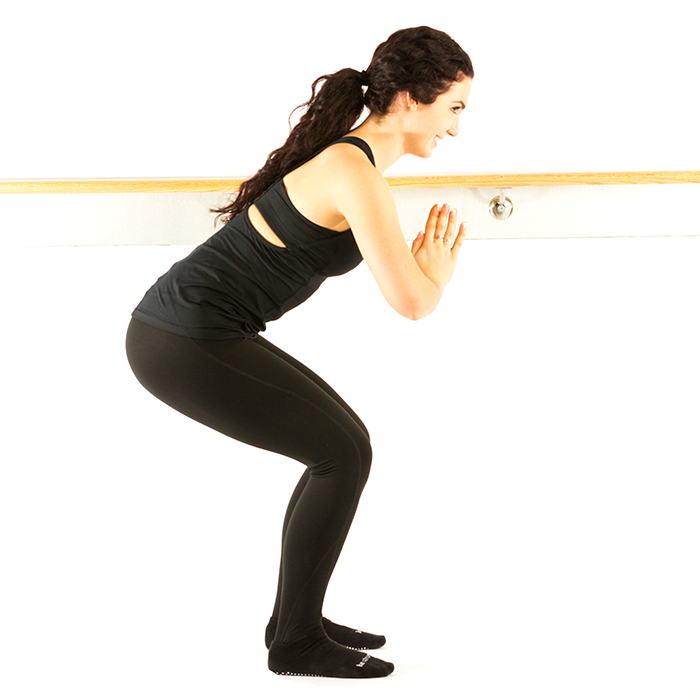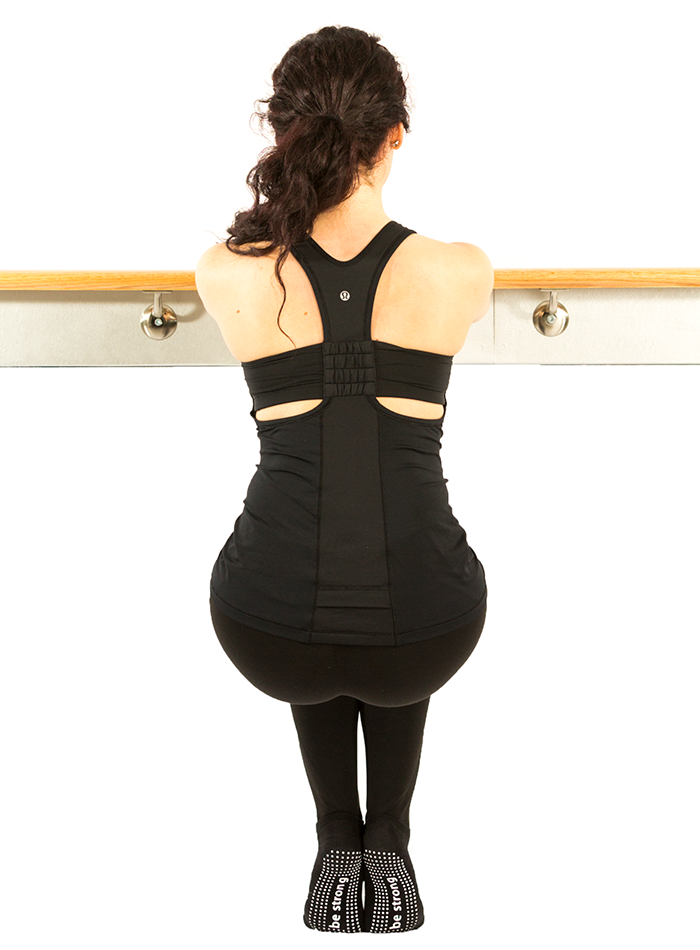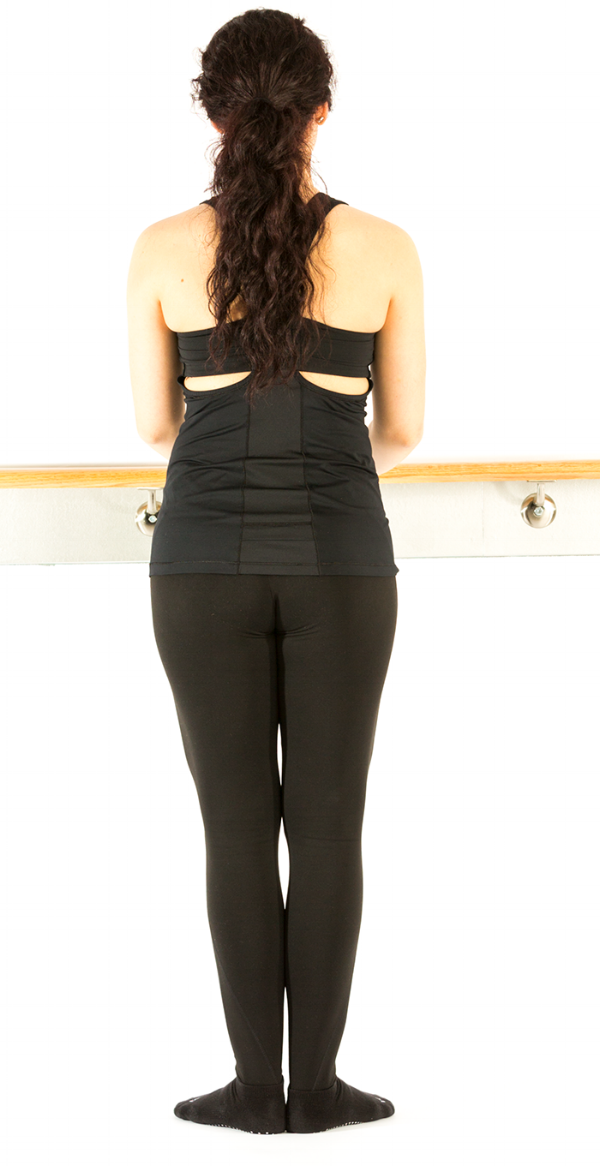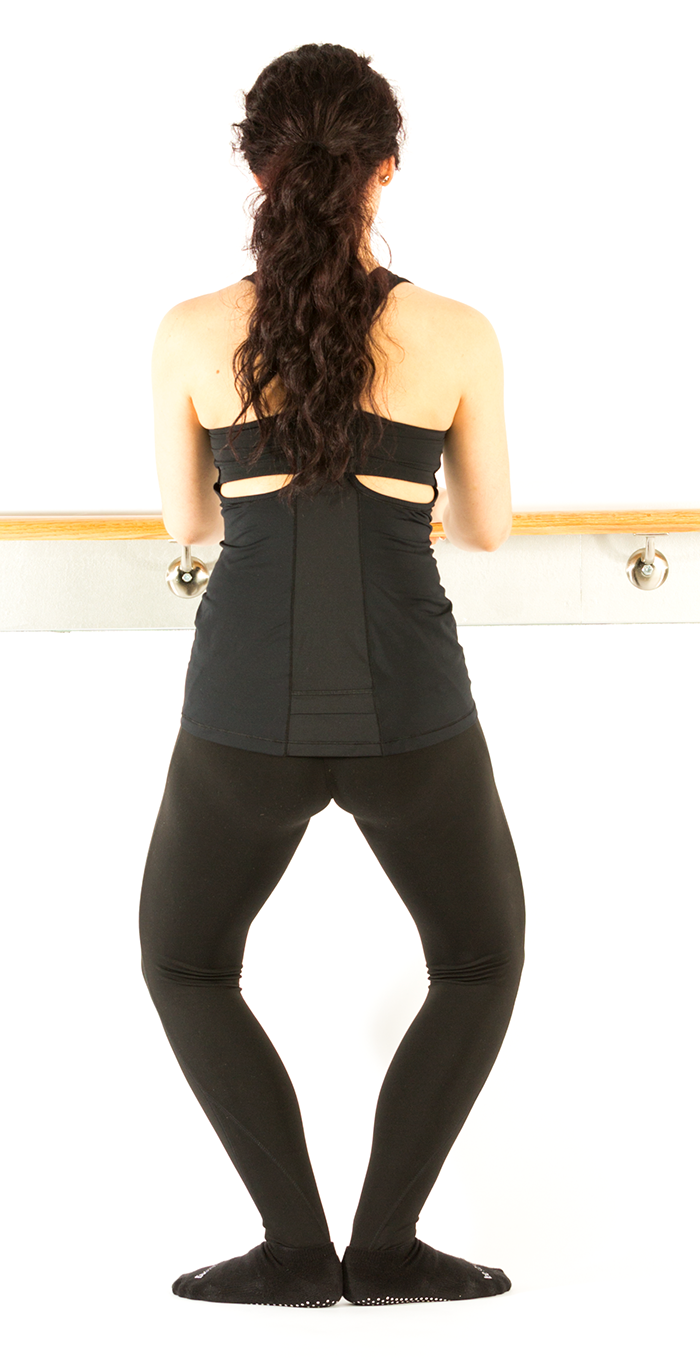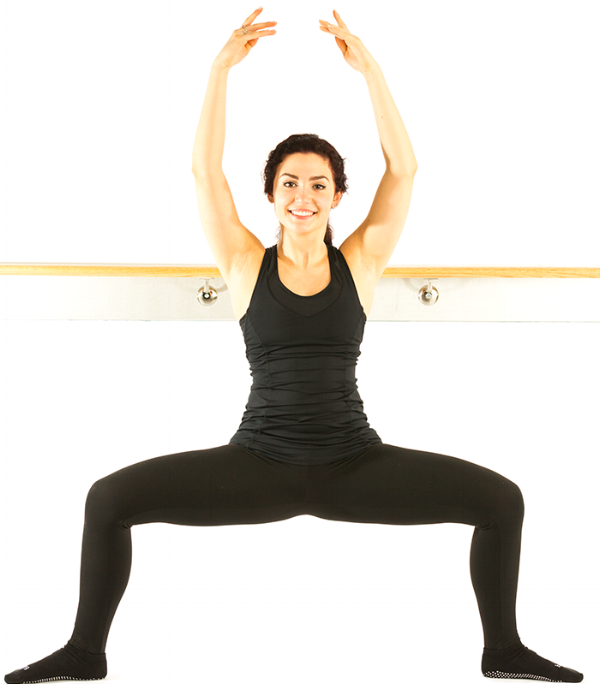Maintaining proper knee alignment in a barre class is crucial for healthy knees. But what do you do when a client in your class has a natural misalignment of the knee like bowed legs or knock knees? We'd like to help you cue those clients who are not able to follow our general rule of thumb, knees in line with toes or behind the toes, and continue attending your barre class without feeling like they're missing out.
Bowed Legs
Bowlegged simply means your knees come out further from the mid-line of your body than someone with normal alignment. A client with this misalignment may have stronger outer thighs and weaker inner thighs. Exercises that require adduction or internal rotation are going to be very challenging for a client with this misalignment. Below are 3 exercises we teach in a Barre Intensity class and how to modify these 3 exercises for the bowlegged client.
1.) Squat
Have your client start with their feet a few inches apart. Then have them turn their toes in towards each other until their big toes touch (instead of facing forward like a normal squat in parallel). From there you can have them squat down as low as they can, comfortably, but not to worry if they don’t go as low as you normally would. Have them reach their arms out for balance if needed. It’s normal for the range of motion to be limited in this exercise to start.
2.) Chair
The standard chair set up requires an optimal spine, flexion of the hips, bending at the knees and thighs parallel with the floor. All of those principles should remain the same but by adding a ball, or even a yoga block, in-between the thighs you can really help those bow-legged clients engage their inner thighs throughout the exercise. The ball helps to give a tactile reference of where to squeeze and how to engage those inner thigh muscles (adductors).
3.) V
The standard set-up starts with legs straight in V. Since the external rotation and the bending of the leg is not the challenging part here for your client, you’ll need to cue them to pull the inner thighs together. A ball or a yoga block between the legs will help your client to engage and focus on the inner thigh work vs. the outer thigh wrapping back. For example, have your class start in V with legs straight and as you add a bending in the knee, have your bow legged client instead add a straightening of the legs, squeezing on the ball or yoga block.
Knock Knees
Knock Knee is a condition in which the knees angle in and touch each other when the legs are straightened. A client with this misalignment may have stronger inner thighs and weaker outer thighs. Exercises that require abduction or external rotation are going to be very challenging for a client with this misalignment. Below are 3 exercises we teach in a Barre Intensity class and how to modify those 3 exercises for the knock-kneed client.
1.) Squat
You’re going to need a resistance band/loop for this one. Have your client start with their feet hip distance apart and toes facing forward. Have them pull the band just below the knees instead of over the thighs. You’ll want to cue that they focus on stretching the band when they bend and straighten the legs. Keeping expansion on the band will activate their abductors and also work on our proper alignment principle, the knees in line with the toes or behind the toes. Cue them to really focus on squeezing the outer thighs on the way up and pressing the band away from the center of the body.
2.) V
Similar to a squat for a client with knock knee, you’ll need a resistance band/loop. Have your client pull the band/loop over the mid-thigh, right over the quad and stand with the heels slightly apart instead of together: clients who are knock knee will not be able to stand in V with their legs perfectly straight while having their heels touch. Generally, there will be no issue when the client zips the legs up in V because the standard set-up starts with legs straight. You’ll need to cue them as they bend the legs to pull the inner thighs away from each other and place resistance on the band/loop throughout the entire movement. The range of motion may be very small but small is much better than having them do nothing at all.
3.) Wide V
In the general set up for Wide V knees are going to bend in line with the second and third toes. Cue your client to take a more narrow stance with the legs closer together rather than further apart. Cue them to also rotate the feet out at an “11” and “1” clock reference points instead of a 10 and 2 or 9 and 3. As the knees bend cue them to press back as you would in a “knee pulse back” and engage the outer hip, abductors. We use “knees pulse back” as a variation in the standard exercise but you should cue “knees press back” as a direction when the knees bend to help strengthen their outer hips and pull away from the mid-line of the body.
Now that you have a broader knowledge on how to modify an exercise for a client with a misalignment, remember to always encourage clients to work within their personal range of motion and comfort. It’s never about height but rather length, it’s not about how fast but how controlled and it’s always about being intense with intention. Bringing awareness to proper form and execution will lead your class into a stronger and healthier one!
